The Women's Suffrage movement in the collections

Ahead of Women's History Month and International Women's Day 2024, Lucy McCaul our Special Collections and Archives Coordinator from the University of Essex Library Services takes a look into the archives to explore a history of Women's Suffrage.
Background and Women's Suffrage
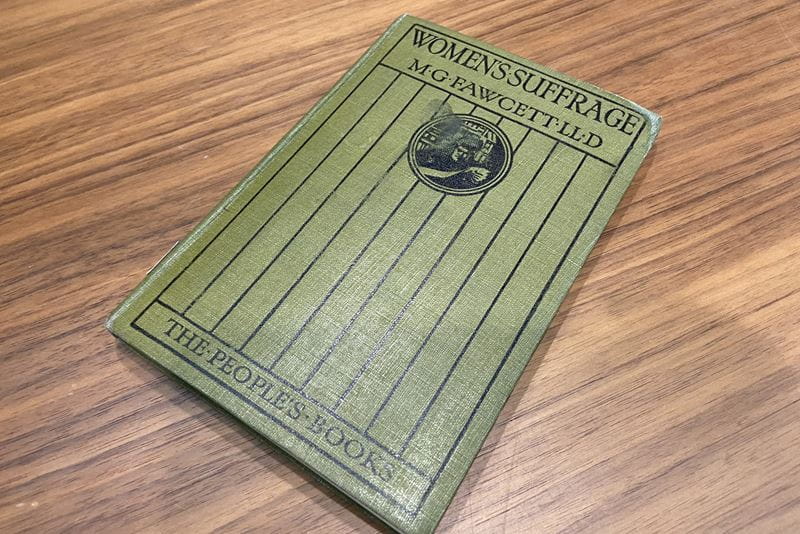
The campaign for a change in law to allow women to vote was at its height in the late nineteenth and early twentieth century. In Britain, the main groups were known as suffragists and suffragettes (an initially disparaging term adopted by the members of the group). The two groups differed from each other in their philosophy and the conduct of their protests.
The suffragists, who were led by Millicent Garrett Fawcett, described themselves as “law-abiding” and sought to change opinion and the law by mass protests and lobbying of members of parliament.
The suffragettes or Women’s Social and Political Union led by Emmeline Pankhurst, and her daughters Christabel, Sylvia and Adela, favoured direct action. Their slogan was “Deeds, not words,” and members of the group protested by interrupting public meetings with banners and shouted slogans, breaking windows, and, eventually, arson and bombings.
Women's Suffrage in the collections
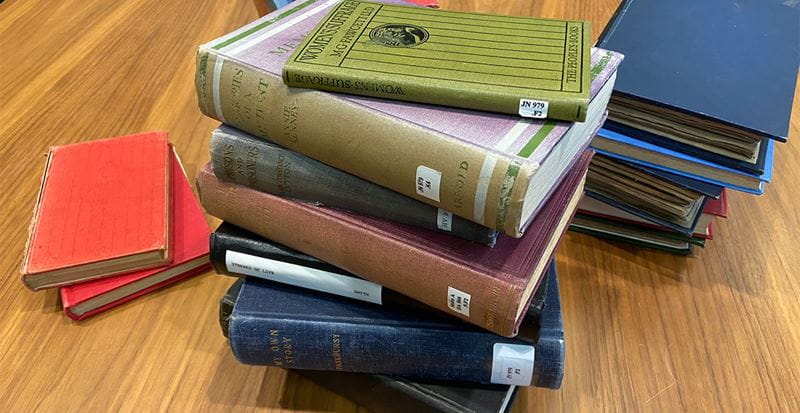
The library collections contain many works on the campaigns for women’s suffrage that took place in the late nineteenth and early twentieth century.
We have books about the campaigns, and the campaigners, from a critical and historical viewpoint. The library also has several books written by the women who were directly involved in the campaigns, and we are going to take a closer look at one of these in this blog post.
Memories of a Militant

The book we are looking at is Memories of a militant, by Annie Kenney, published in 1924.
Annie Kenney was born in Lancashire in the north of England, in 1879. She began working in a textile mill at the age of 10 and lost a finger in an industrial accident while she was still a child. She was inspired to join the suffrage campaign after hearing a speech by Christabel Pankhurst (one of the leaders of the Women’s Social and Political Union, or WSPU).
In her book, she shares her experiences of protest, militant action and imprisonment. Like many of her fellow campaigners, Annie Kenney went on hunger strike in prison, and was forcibly fed by prison doctors. She was also subject to a law known as the “Cat and mouse act,” where hunger striking prisoners were released when their health deteriorated, then rearrested when they had recovered.
Annie Kenney was the only working-class woman to be appointed to a position of authority in the WSPU. She was made leader of the WSPU in London when Christabel Pankhurst travelled to France for a year to avoid being arrested.
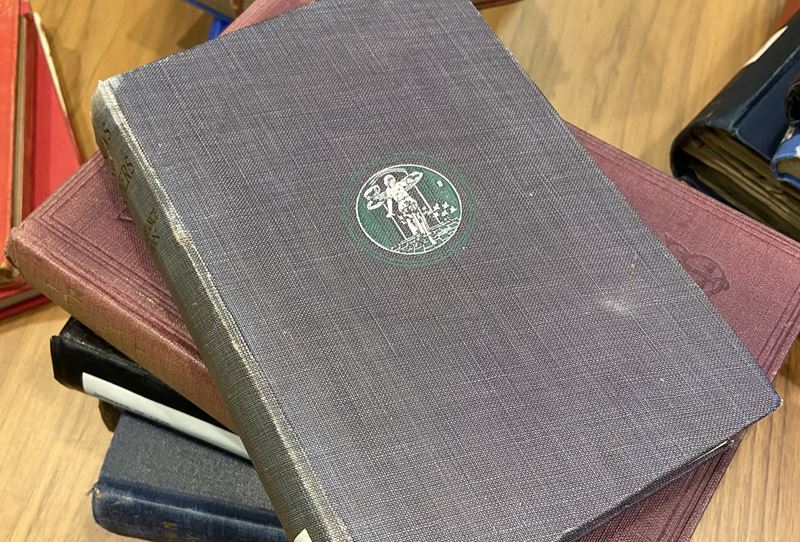
This book is interesting and important because it gives us Annie Kenney’s perspective on events, and her motivations and experiences, but it is also interesting as an object. This copy is a first edition, the earliest version published, and the binding is the colours of the WSPU, purple, green and white.
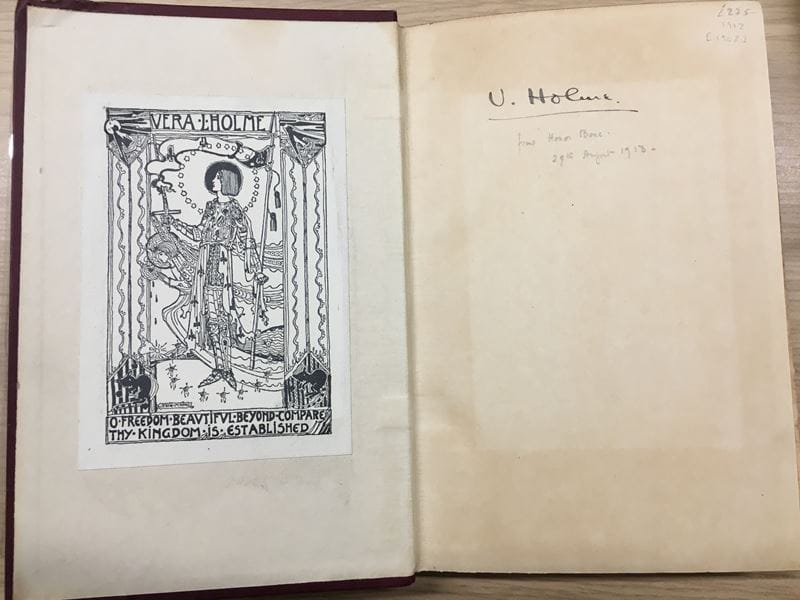
Inside the front cover is a bookplate, which tells us the name of one of the previous owners. Thanks to the bookplate, we know that the book was owned by Vera L. Holme, an active member of the WSPU who was Emmeline Pankhurst’s chauffeur. Vera Holme was an actress and was also known as Jack, possibly after a male character she portrayed on the stage. During the First World War, she joined the Scottish Women’s Ambulance (SWA) unit and served as an ambulance driver in Serbia. After the war, she became an administrator of the Haverfield Fund for Serbian Children, which was founded by her partner Eveline Haverfield, a fellow suffragette and member of the SWA.
So, this book not only provides us with a link to Annie Kenney, but also to Vera ‘Jack’ Holme, a fascinating example of a book that tells two stories of the author and the owner.
The rich - poor divide in suffrage

Another example of a suffragette memoir in our collection is Prisons and prisoners: some personal experiences, by Lady Constance Bulwer-Lytton. Lady Constance was a noblewoman and campaigner for prison reform, who embraced the suffragette movement in 1908, after her interest in philanthropy and social reform led to an unexpected meeting with Annie Kenney and Emmeline Pethick-Lawrence (treasurer of the WSPU).
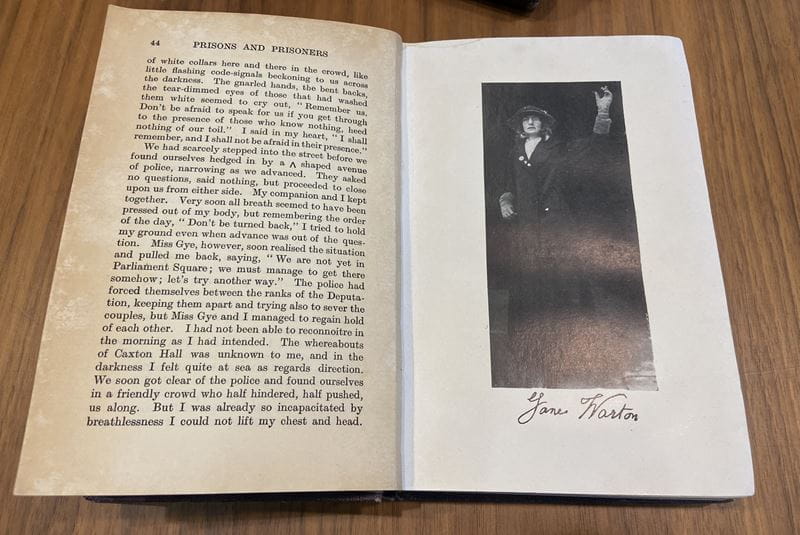
Constance Lytton was imprisoned several times. The conditions she saw and experienced made her even more determined to bring about change and expose the hardships and injustices of prison life and strengthened her resolve to secure the vote for women. To get first-hand experience and evidence of the inequalities of treatment between the upper and lower classes, she disguised herself as a lower-class woman, using the name Jane Warton. She was arrested for throwing stones at the house of the Governor of Liverpool Prison during a protest and was sentenced to 14 days imprisonment with hard labour at Walton Prison. She went on hunger strike and was force fed. Her actions against this form of abuse later resulted in bringing about the end of force-feeding as a penal practice.
Special Collections
Our Colchester Campus library houses Special Collections, over 70 individual archives containing primary source materials and collections covering a variety of subjects and time periods. The collections provide a valuable resource for teaching, through object based learning and other sessions, and for research.
Find out how you can book to view items in the University of Essex Library's Special Collections.



